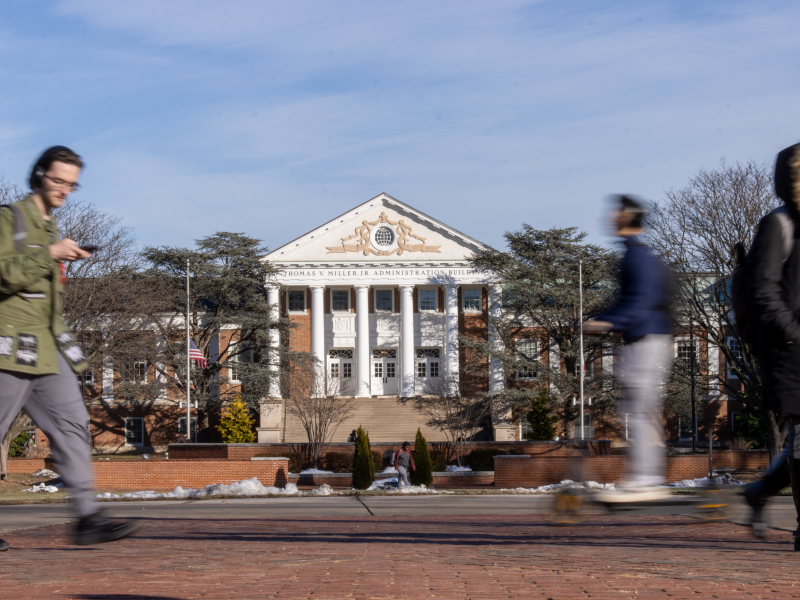This piece is in response to a column by Hope Hynson.
The summer before my freshman year, I was convinced that I was going to join the Indian Student Association. I was going to attend every meeting, go to every formal and become a part of a group of people just like me. My mom even suggested I try out for an Indian dance team, and I was so willing to do so, despite my complete lack of rhythmic talent. The thought alone was thrilling. I was excited to start a chapter of my life when I wouldn’t lack in a group of close Indian friends, something I had never had before. I thought that they would be the people who could understand me the best.
Twenty minutes into my first ISA meeting, I realized that I was not that person. It’s hard to explain really; I’m proud of my brown skin, my ethnic name and my womanhood. They’re important to me. As a child, I carried them around awkwardly, like excess weight I didn’t know where to put down. But after years of feeling different from other people, I wear them like badges of honor. I am a woman. I am the daughter of Indian immigrants, and I am a real, live person who doesn’t exist in a microcosm of those things. For me, at that first meeting, surrounded by people that looked like me and grew up like me, I didn’t feel particularly understood.
Two years later, I look at my involvement on-campus. I’m the director of communications for the Student Government Association, a recent alum of the CIVICUS Living and Learning Program and a former member of Maryland Discourse. For many students on this campus, cultural organizations are the right fit. But in all three of these activities, I was one of a few people of color.
The learning curve was sometimes steep. It’s hard to get used to the idea that someone may see a brown girl sitting in a room and assume that you’re a certain type of person, or that someone who may seem really cool can say something totally insensitive about you from a place of privilege without knowing it. At the same time, I’ve gained so much. I’ve met people so different from me — people I now call friends. There’s the girl who grew up on a dairy farm in Harford County, a through and through conservative, a prep school graduate. There are 27 thousand undergraduates at this university, and all of them have lived unique, full lives — some of them diametrically opposite from mine.
So why grin and bear it? I think of young women of color everywhere – the ones that have just gotten to campus, my relatives and the ones to come. How many of them think that they’re capable? How many of them think that they can make real change; that they can walk into a room and accomplish something big? Even now, at 20, in the burgeoning stages of my career and my adulthood, I’m not always so sure that I’m capable of doing things. But I recognize that by being there and by being involved in different facets of campus life, I can let someone else know that there’s space for them too. You cannot be what you don’t see, or so the expression goes, and if we want to make change, we need to be seen.
As people of color, we often talk about white people behind closed doors — how we don’t understand them, how we feel excluded by them and how the world feels bent in their favor. These are conversations that cannot remain behind closed doors. We cannot lock ourselves away and wring our hands over the ways we are slighted — the microaggressions, the denials of privilege, the way racism is institutional. We have to do something about it.
It will never get easier to listen to people be insensitive or racist. It will never bother you less. Some days, I am so discouraged by the state of race relations on this campus. As a freshman, it was disheartening to read a leaked email from a white fraternity member that referred to people that look like me and my friends as “slanted-eye chinks,” “curry monsters” and “n***er gals.” The author signed off with the words “fuck consent.” It was even more disheartening when the author of the email faced minimal disciplinary consequences from the university administration.
Compare that to the Courtyards incident. It’s shameful when black students on this campus and members of black Greek organizations get brutalized by police at a graduation party, and the outcome of the investigation of the incident says that the use of force was justified. There are disparities, and no one can deny that. Black students, and other students of color, have a different experience on-campus than many white students. But apathy breeds resentment.
Every Wednesday at 6 p.m., the SGA meets in Stamp Student Union. I urge you not to throw your hands up in exasperation, but to come to a meeting. True diversity isn’t as black or white as it seems — no pun intended. We have members of Greek life, members of the black community and members of the Jewish community on the campus. Members of the SGA come together from across ethnic lines, across political affiliations and across geographical origins to do our best to amplify the voices of all students — not just the ones that look like us.
The SGA is not free from criticism. Have we historically done enough for students of color? The answer is no. But I’m in the room now, and so are so many others. We host events like last month’s panel with the UMPD, not with the promise of complete racial unity on this campus, but because we want to be better and do better.
Nisha Desai is a junior English major. She can be reached at nishadesai96@gmail.com.



